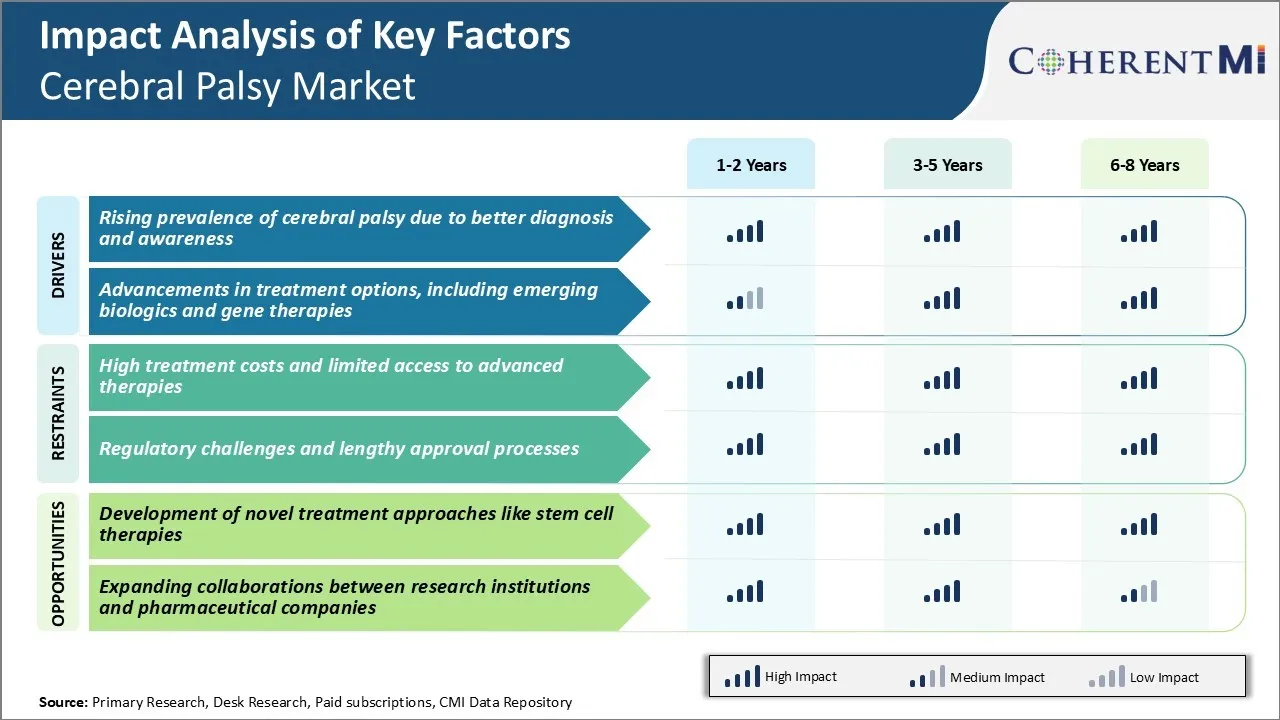Cerebral Palsy Market Trends
Market Driver - Rising Prevalence of Cerebral Palsy Due to Better Diagnosis and Awareness
Cerebral palsy, though a non-progressive disease, has no known cause and symptoms can vary greatly among individuals. Studies indicate that prevalence has increased from an estimated 2-2.5 per 1000 children three decades ago to over 3 per 1000 children currently across developed nations. Experts believe true incidence could still be higher than reported figures as mild cases may continue to evade diagnosis in underdeveloped regions with limited access to advanced healthcare facilities.
Moreover, efforts by advocacy groups to spread knowledge about the condition among public as well as medical practitioners has boosted early detection rate. Parents are now more vigilant about signs like delayed motor skills or inability to sit and crawl at appropriate developmental milestones. They tend to promptly consult pediatric neurologists for evaluation. Improved antenatal and neonatal care practices have also played a role by enabling survival of extremely preterm infants who are at higher risk. All these factors combined have significantly widened the pool of people identified with cerebral palsy.
Nevertheless, rising prevalence globally presents a challenge as it translates to a growing cerebral palsy patient population seeking long-term supportive care and therapies. This is fueling demand for drugs, devices, therapies and other treatment services in the cerebral palsy market.
Market Driver - Advancements in Treatment Options
While the traditional, non-pharmacological interventions remain the mainstay, a host of advanced treatment avenues are now available that are helping address the condition more effectively. One of the most promising developments is the entry of new genetically-engineered biologics that target specific pathways involved in the disease process.
Biologics like intrathecal baclofen, onabotulinumtoxinA and fetal cell transplantation are bringing significant functional improvements for individuals by mitigating symptoms like spasticity, dystonia and pain. Their selective mechanism of action provides relief without major side effects seen with oral drugs. Steady progress is also being made on the gene therapy front to achieve genetic modifications corrective of underlying abnormalities causing cerebral palsy.
While still at a research stage, gene therapies hold immense potential if proven safe and effective in future. Stem cell-based therapies involving transplantation of modified stem cells are another area generating hope. Advances are concurrently being made on the rehabilitation side as well through robotics, virtual reality and 3D printing. When combined with pharmacological and genetic based solutions, futuristic treatment protocols are being envisioned that may achieve near complete control over cerebral palsy symptoms. This thriving research and development activity is attracting huge investments, thereby fostering strong growth of the overall cerebral palsy market.

Market Challenge - High Treatment Costs and Limited Access to Advanced Therapies
One of the major challenges faced by the cerebral palsy market is the high treatment costs associated with caring for patients suffering from the condition. Cerebral palsy requires long-term management and therapy, which involves substantial costs for medications, therapies, surgeries and other interventions.
Advanced treatment approaches such as stem cell therapies that have shown promise come with extremely high price tags that are unaffordable for many patients and healthcare systems. The costs of cerebral palsy exceed $10 billion annually in the US alone. Limited healthcare budgets globally pose significant constraints in providing widespread access to newer and advanced treatment options.
Not all patients are able to afford or gain insurance coverage for expensive interventions. This leaves many without access to potentially life-enhancing therapies. High costs thus act as a major barrier limiting further growth of the cerebral palsy treatment market.
Market Opportunity - Development of Novel Treatment Approaches Like Stem Cell Therapies
One of the major opportunities in the cerebral palsy market lies in the development of novel treatment approaches, such as stem cell therapies. Stem cell therapies have emerged as a promising avenue for managing cerebral palsy symptoms and potentially improving long-term outcomes for patients. Several ongoing clinical trials are evaluating the safety and efficacy of stem cell interventions for cerebral palsy.
Preliminary studies have indicated their ability to reduce spasticity, improve motor functions and enhance quality of life. With further research and development efforts, stem cell therapies may provide an affordable and effective alternative to existing medical management and surgeries.
This could expand the cerebral palsy treatment marketplace manifold. Greater private sector investment in this area could facilitate the commercialization of innovative stem cell-based therapies. This presents a major growth opportunity for firms to capitalize on in the coming years.